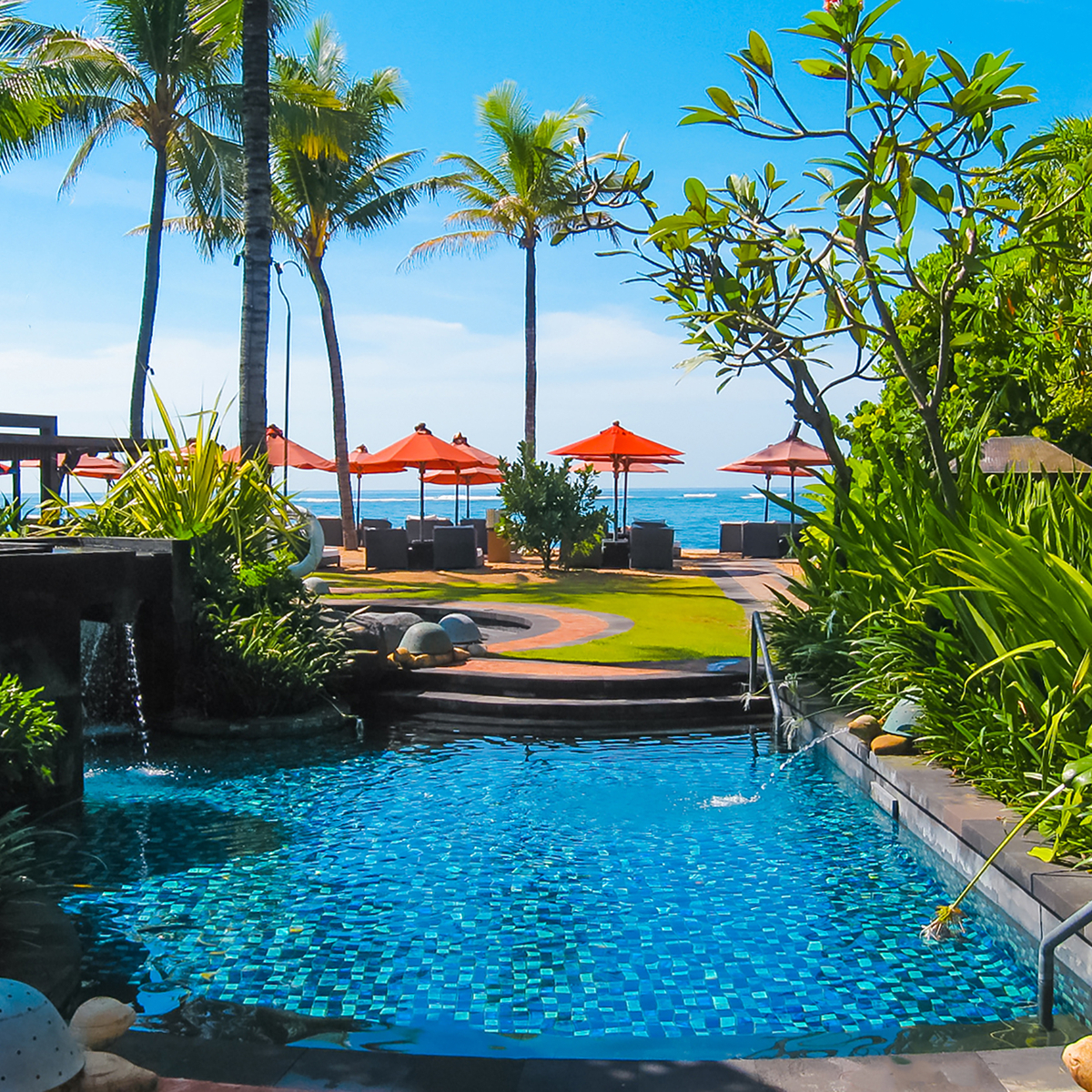Ubud is most well-known by international travelers as the greenest part of Bali because it has a lot of tourist attractions with green features, such as lush forests, ridge walks, and rice terraces. One of the most popular green attractions here is Tegallalang Rice Fields. Also known as Tegallalang Rice Terrace, it is a series of beautifully arranged paddies which follows the traditional Balinese irrigation system called “subak.” The system is said to have been passed down by a sage named Rsi Markandeya in the 8th century.
THE SCENIC GREENERY
Tegallalang Rice Fields is situated in a valley that offers extraordinarily scenic lookouts over the terraces and surrounding green landscape. Along with the ones in the villages of Pejeng and Campuhan, Tegallalang Rice Fields form the three most stunning-looking terraced landscapes in Ubud region.

Since it has been listed in UNESCO World Heritage site, this place has gained popularity among international travelers. Nevertheless, it is still a great place to wind down and ease your mind as it offers a quiet and relaxing atmosphere.
HOW TO GET THERE
Tegalalang Rice Terrace is only a short 20-minute drive north of Ubud, but those who prefer walking can take a two-hour on foot journey there. It’s relatively easy to reach, especially if you decide to take your own rented car or motorcycle. You can go there by taxi as well. There are many ways for you to choose, and every one of them offers different experiences that are equally convenient.
THINGS TO DO NEARBY
Hike Down the Elevation

Once you arrive at Tegalalang Rice Fields, the first thing you can obviously do is to savor the view from the top of the elevation. However, it’s also possible for you to cross a small stream and get to the rice fields on the other side. We would suggest you climb down and explore the area further to find cool spots for you to take pictures. You will need approximately 30 minutes to 1.5 hours to explore every corner of the area. It’s not that lengthy, considering what you’ll find along the exploration will make it worthwhile. Don’t forget to bring water and put on some sunscreen!
Swing at the “LOVE BALI” Sign
There are many swings in Bali, especially in Ubud. However, you definitely should not miss this one particular swing with the “LOVE BALI'' sign at the entrance of the rice fields. It might not look that challenging, but you can’t deny its extremely cute design. We recommend you prepare some cash because you will find local children guarding the sign there.

Next, there are the sensational and unmissable swings of Dewata Island, such as Aloha Ubud Swing and Lotus Ubud Swing, both of which are CHSE certified! Here, you are able to feel a refreshing breeze around the swings, accompanied by the sight of stretching forest that'll sure to ease your mind.
Taste authentic Balinese coffee
How about a sip of coffee on your walk amongst the rice fields? If you say yes, then a recommended spot for you is the Bali Pulina plantation. Just about 1.3 km away from Tegallalang Rice Terrace, the site lets you learn the process of making traditional Luwak Coffee. Enjoy stunning green scenery as you’re guided through the plantation. Then taste Bali’s authentic coffee, savoring every sip. It’s the perfect spot after a morning stroll.

Tegallalang Rice Fields offers a different kind of enjoyment that will make you want to visit Bali again and again. When you finally get here, don’t forget to always be a responsible traveler by always complying with the health protocols, which means to always practice healthy habits of social distancing, frequently washing hands, and putting on a mask in public places. Last but not least, always respect the locals and their beliefs.


































